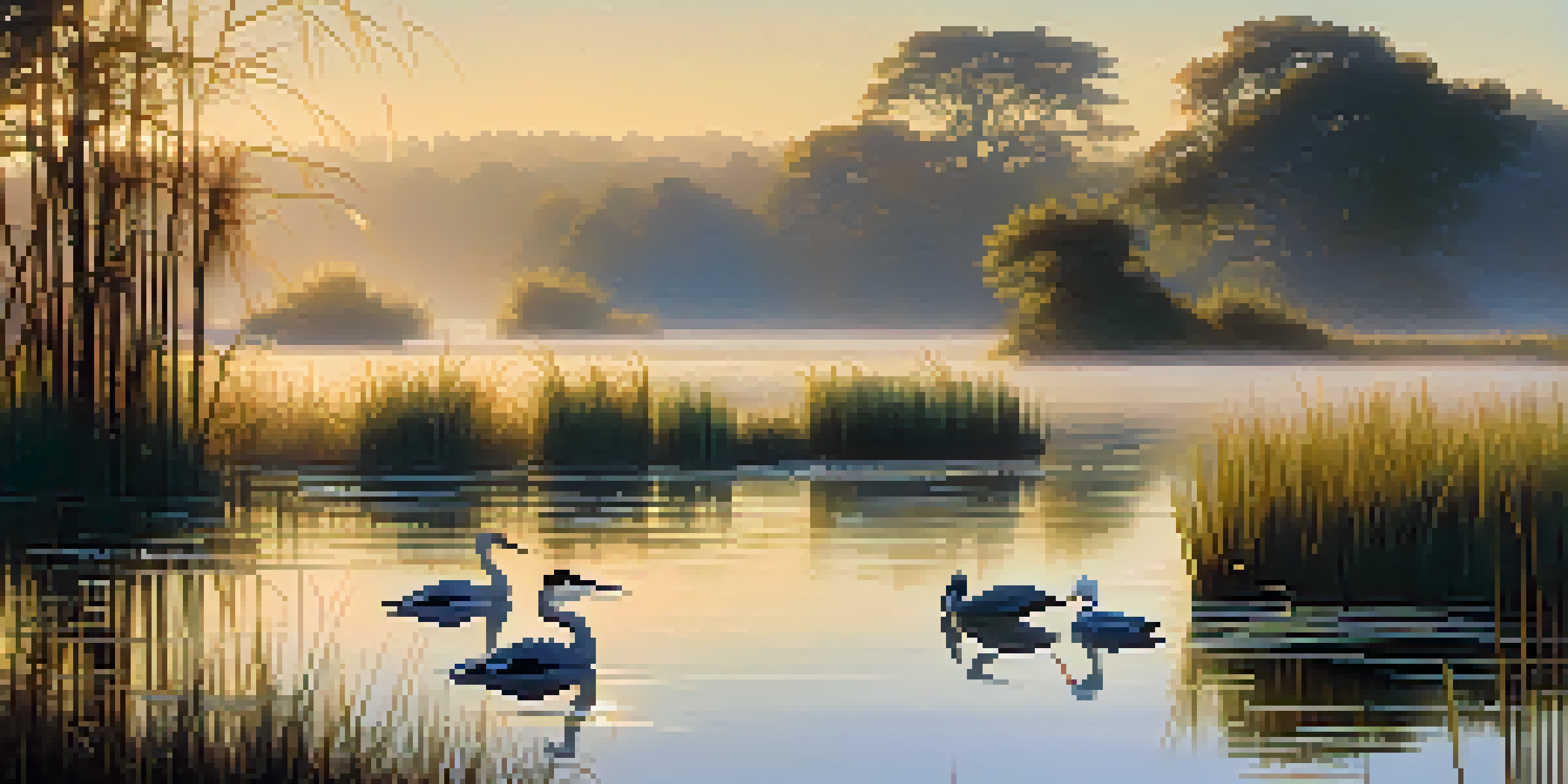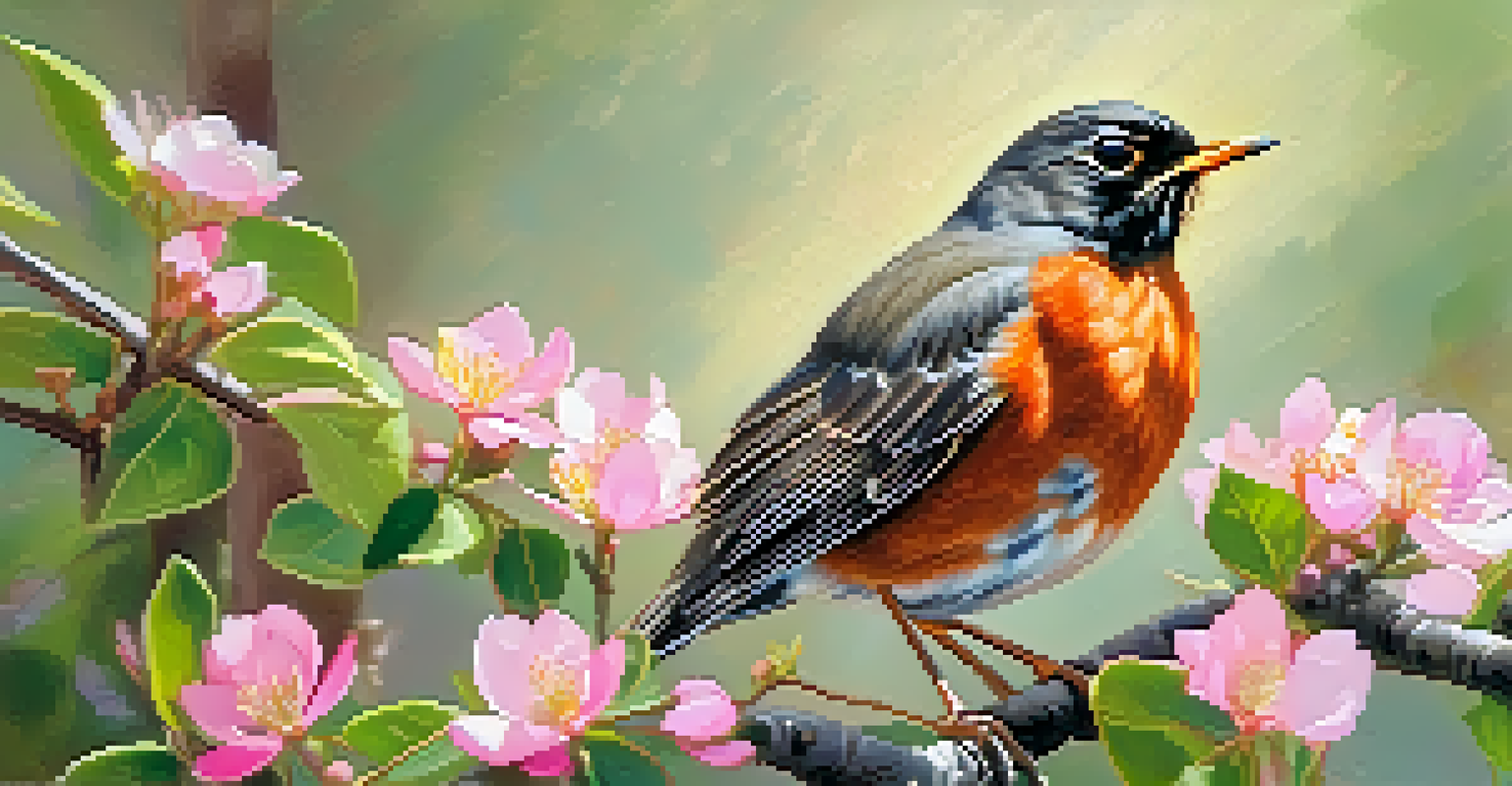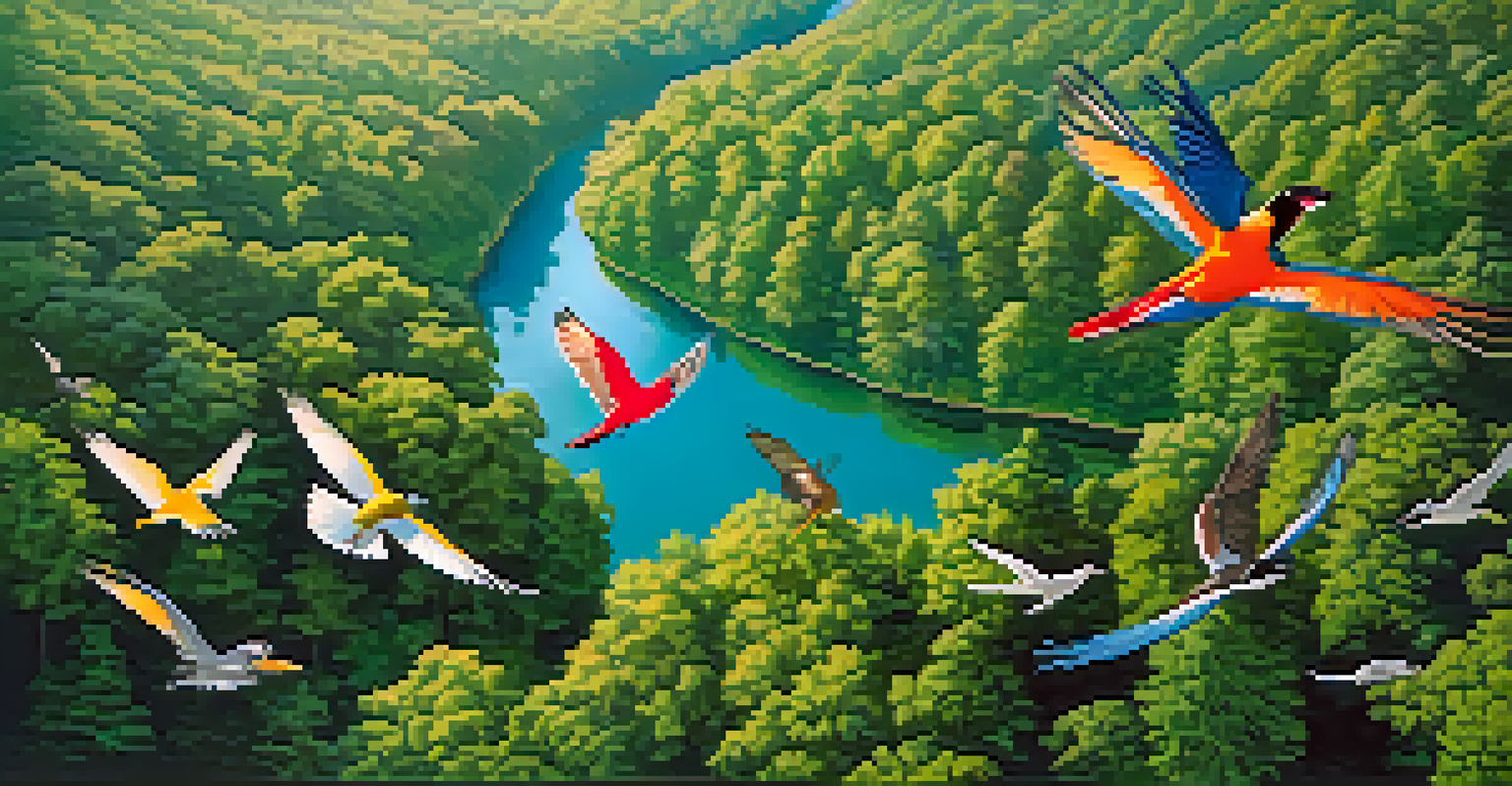The Impact of Climate Change on Bird Populations

Understanding Climate Change and its Basics
Climate change refers to long-term shifts in temperatures and weather patterns. While these changes can occur naturally, human activities have accelerated the process, leading to significant impacts on the environment. From rising sea levels to changing precipitation patterns, these shifts create a ripple effect on various ecosystems, including the habitats of countless bird species.
What we are doing to the forests of the world is but a mirror reflection of what we are doing to ourselves and to one another.
Birds are particularly sensitive to climate change due to their reliance on specific habitats and food sources. For example, migratory birds depend on predictable seasonal changes to know when to travel and where to find food. When these patterns are disrupted, it can lead to mismatches between breeding seasons and food availability, jeopardizing their survival.
Understanding the basic principles of climate change helps us appreciate its complexities. Just as a small pebble can cause ripples in a pond, minor changes in temperature can lead to significant consequences for bird populations. As we delve deeper into this topic, we'll see how these ripples affect various species across the globe.
Shifts in Migration Patterns Due to Climate Change
Many bird species migrate to take advantage of seasonal resources. However, climate change has begun to alter these migration patterns, with some birds arriving at their breeding grounds too early or too late. This misalignment can lead to decreased reproductive success, as food sources may not be available when chicks hatch.

For instance, studies show that species like the American Robin are migrating earlier in the spring due to warmer temperatures. While this may seem beneficial, it can create competition for resources and lead to increased mortality rates among fledglings. The changing climate is not just a backdrop; it actively reshapes the very lives of these birds.
Climate Change Affects Bird Habitats
Rising temperatures and habitat loss are significantly threatening various bird species, impacting their survival.
These shifts in migration highlight the intricate balance of ecosystems. Birds, much like clockwork, have evolved to follow specific schedules. When the clock gets thrown off by climate change, the entire system is affected, showcasing the delicate interconnectedness of nature.
Habitat Loss: A Direct Threat to Birds
As temperatures rise, many bird species face habitat loss. Wetlands, forests, and grasslands are all at risk due to changing climate conditions, leading to a decrease in suitable environments for birds. This loss of habitat not only affects where they can live but also impacts their ability to find food and shelter.
In nature, nothing exists alone.
Moreover, urbanization and agriculture continue to encroach upon natural habitats, compounding the challenges birds face. For example, the disappearance of wetlands affects species like the Black Skimmer, which rely on these areas for nesting and feeding. As their habitats shrink, so does their chance of survival.
The urgency of habitat conservation becomes clear when we consider the stakes. Just as a home is crucial for a family, a suitable habitat is essential for birds. Protecting and restoring these environments is vital to ensure that bird populations can thrive amid the challenges posed by climate change.
Changing Food Sources and Their Impact
Climate change also disrupts the availability of food sources for birds. Changes in temperature and precipitation can alter plant growth, impacting the insects and seeds that many birds rely on for nourishment. For example, a warmer climate may lead to earlier blooming of flowers, which could affect the timing of insects that feed on them.
This misalignment can create a situation where birds arrive at their breeding grounds only to find that their primary food sources are scarce or unavailable. Species like the Common Chiffchaff, which feed on insects, may struggle to find adequate food if their food supply doesn't sync with their migration.
Migration Patterns are Disrupted
Changes in climate are altering migration schedules, causing mismatches between breeding seasons and food availability for birds.
The intricacies of these food webs illustrate how everything is interconnected. Just as a chef relies on specific ingredients to create a dish, birds depend on a delicate balance of food sources for their survival. When one element is out of sync due to climate change, the entire ecosystem feels the effects.
Extreme Weather Events and Bird Survival
With climate change, extreme weather events such as hurricanes, droughts, and heatwaves are becoming more frequent. These events can be devastating for bird populations, causing direct mortality and destruction of nesting sites. For instance, hurricanes can wipe out entire colonies of seabirds, leaving them vulnerable to extinction.
Additionally, extreme weather can disrupt breeding cycles and food availability. For example, a prolonged drought may lead to food shortages, leaving birds struggling to survive. The unpredictable nature of these events makes it difficult for birds to adapt, especially for species with specific habitat requirements.
The resilience of birds is commendable, but they are not invincible. Much like humans, they too are affected by the unpredictability of their environment. Understanding the impact of extreme weather is crucial in developing strategies to protect vulnerable bird populations.
The Role of Conservation Efforts
As the impacts of climate change on bird populations become more evident, conservation efforts play a critical role in mitigating these challenges. Organizations worldwide are working to protect habitats, monitor bird populations, and advocate for policies that address climate change. These efforts are vital to ensuring that future generations can enjoy the beauty of diverse bird species.
For instance, habitat restoration projects focus on reestablishing native vegetation and creating safe spaces for birds to thrive. By restoring these ecosystems, we help birds adapt to changing climates while also preserving biodiversity. Community engagement and education are equally important, as they empower individuals to take action and support conservation initiatives.
Conservation Efforts are Vital
Active conservation initiatives and individual actions are crucial to protecting bird populations from the adverse effects of climate change.
Conservation is a shared responsibility. Just as many hands make light work, collective efforts can lead to meaningful change. By supporting conservation initiatives, we can help safeguard the future of our feathered friends in the face of climate change.
How Individuals Can Help Bird Populations
While large-scale conservation efforts are essential, individuals can also make a significant impact on bird populations. Simple actions like planting native plants in gardens, reducing pesticide use, and creating bird-friendly spaces can provide essential resources for local birds. Every small step counts in making a difference.
Participating in citizen science projects, such as bird counts or monitoring local species, can also contribute to valuable data that informs conservation strategies. By sharing observations, individuals help researchers understand how climate change affects local bird populations, providing insights that can shape future efforts.

Ultimately, caring for birds begins in our own backyards. Just as a single drop can create ripples in a pond, individual actions can contribute to a larger wave of change. By fostering a love for birds and their habitats, we can all play a role in their survival amid the challenges of climate change.
The Future of Bird Populations Amid Climate Change
As we look to the future, the fate of bird populations hangs in the balance due to climate change. With ongoing habitat loss, shifting migration patterns, and the threat of extreme weather, many species face uncertain futures. However, there is still hope as conservation efforts and public awareness grow.
The key to protecting birds lies in understanding the challenges they face and taking proactive measures. By advocating for policies that address climate change and supporting local conservation initiatives, we can help create a more stable environment for birds. Every action, no matter how small, can contribute to a brighter future for these avian species.
In the end, the survival of birds is a reflection of our commitment to the planet. Just as we are stewards of our own homes, we must also care for the natural world. Together, we can ensure that the songs of birds continue to fill our skies, reminding us of the beauty and resilience of nature.